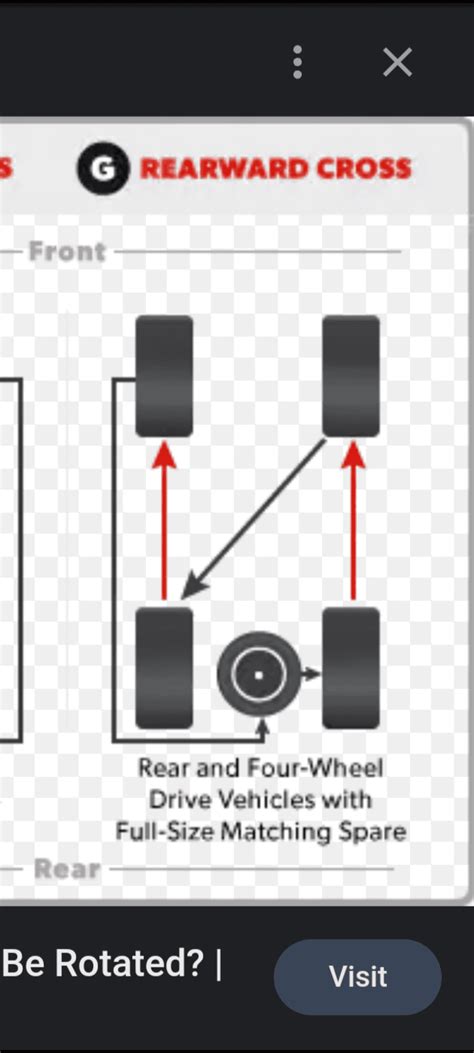How Does Tpms Know Which Tire Is Which After Rotation
Ronan Farrow
Apr 04, 2025 · 2 min read

Table of Contents
How Does TPMS Know Which Tire is Which After Rotation?
Tire Pressure Monitoring Systems (TPMS) are designed to alert drivers when tire pressure is low, contributing to improved safety and fuel efficiency. But a common question arises: how does a TPMS know which tire is which after a tire rotation? The answer depends on the type of TPMS system your vehicle uses.
Direct TPMS vs. Indirect TPMS
There are two main types of TPMS:
Direct TPMS
Direct TPMS uses sensors individually installed inside each tire. These sensors directly measure the tire pressure and transmit the data wirelessly to the vehicle's onboard computer. Each sensor has a unique ID, meaning the system can always identify which tire the reading is coming from, regardless of rotation. Even if the tires are swapped, the computer remembers which ID corresponds to which wheel position. This provides highly accurate and reliable pressure readings.
Indirect TPMS
Indirect TPMS doesn't use individual sensors in each tire. Instead, it relies on the Anti-lock Braking System (ABS) sensors already present in the vehicle. By monitoring wheel speed differences, the system can indirectly infer tire pressure. If one tire has significantly lower pressure, it will rotate slower than the others.
This system is less precise than direct TPMS and is more susceptible to false readings due to factors other than tire pressure, such as road conditions or slight variations in tire size. Crucially, because it doesn't use individual sensors with unique IDs, indirect TPMS can't identify which specific tire is low after a rotation. The system will only indicate a low pressure in one of the wheels, without specifying the exact location.
What Happens After a Tire Rotation?
- Direct TPMS: No action is needed. The system will continue to correctly identify each tire and display pressure readings for each wheel. The unique sensor IDs remain constant.
- Indirect TPMS: The system may need recalibration or a short drive to accurately register the new wheel positions. The system will identify a low pressure tire, but not precisely which one.
Troubleshooting TPMS Issues
If you experience issues with your TPMS after a rotation, consider the following:
- Check the TPMS light: A consistently illuminated light indicates a problem that requires professional attention.
- Verify your TPMS type: Knowing whether your vehicle has direct or indirect TPMS will help determine the troubleshooting steps. Your owner's manual is a valuable resource for this information.
- Consult a professional: If you're unsure about your TPMS system or experiencing persistent problems, a qualified mechanic can diagnose and resolve the issue.
In Conclusion
The ability of a TPMS to identify which tire is which after rotation is directly linked to the type of system your vehicle uses. Direct TPMS offers superior accuracy and doesn't require recalibration after rotations. Indirect TPMS, however, relies on wheel speed differences and cannot pinpoint individual tires after rotation, leading to less precise pressure readings. Understanding the differences between these systems helps in troubleshooting any potential issues.
Featured Posts
Also read the following articles
| Article Title | Date |
|---|---|
| How Fast Does A 90 Hp Pontoon Boat Go | Apr 04, 2025 |
| How Do I Become A Boxing Referee | Apr 04, 2025 |
| How Did Ryan Selwood Die | Apr 04, 2025 |
| How Do You Know If Root Canal Failed | Apr 04, 2025 |
| How Do You Address A Nurse Practitioner In An Email | Apr 04, 2025 |
Latest Posts
-
How I Seduced My Dad
Apr 04, 2025
-
How I Quit Ketamine
Apr 04, 2025
-
How I Learned To Drive Review
Apr 04, 2025
-
How I Became A Pirate Activities
Apr 04, 2025
-
How Humans Evolved 9th Edition Pdf Free
Apr 04, 2025
Thank you for visiting our website which covers about How Does Tpms Know Which Tire Is Which After Rotation . We hope the information provided has been useful to you. Feel free to contact us if you have any questions or need further assistance. See you next time and don't miss to bookmark.
